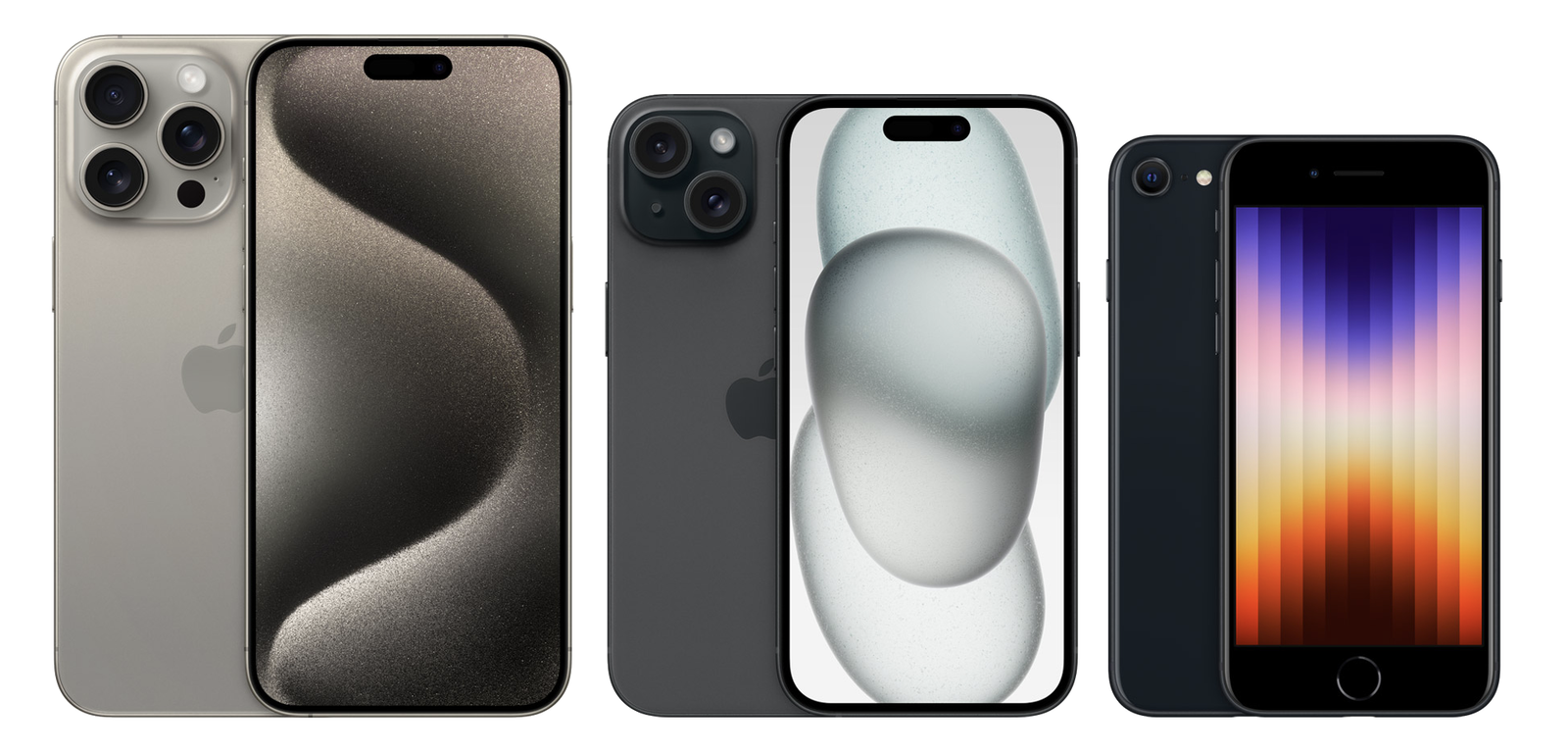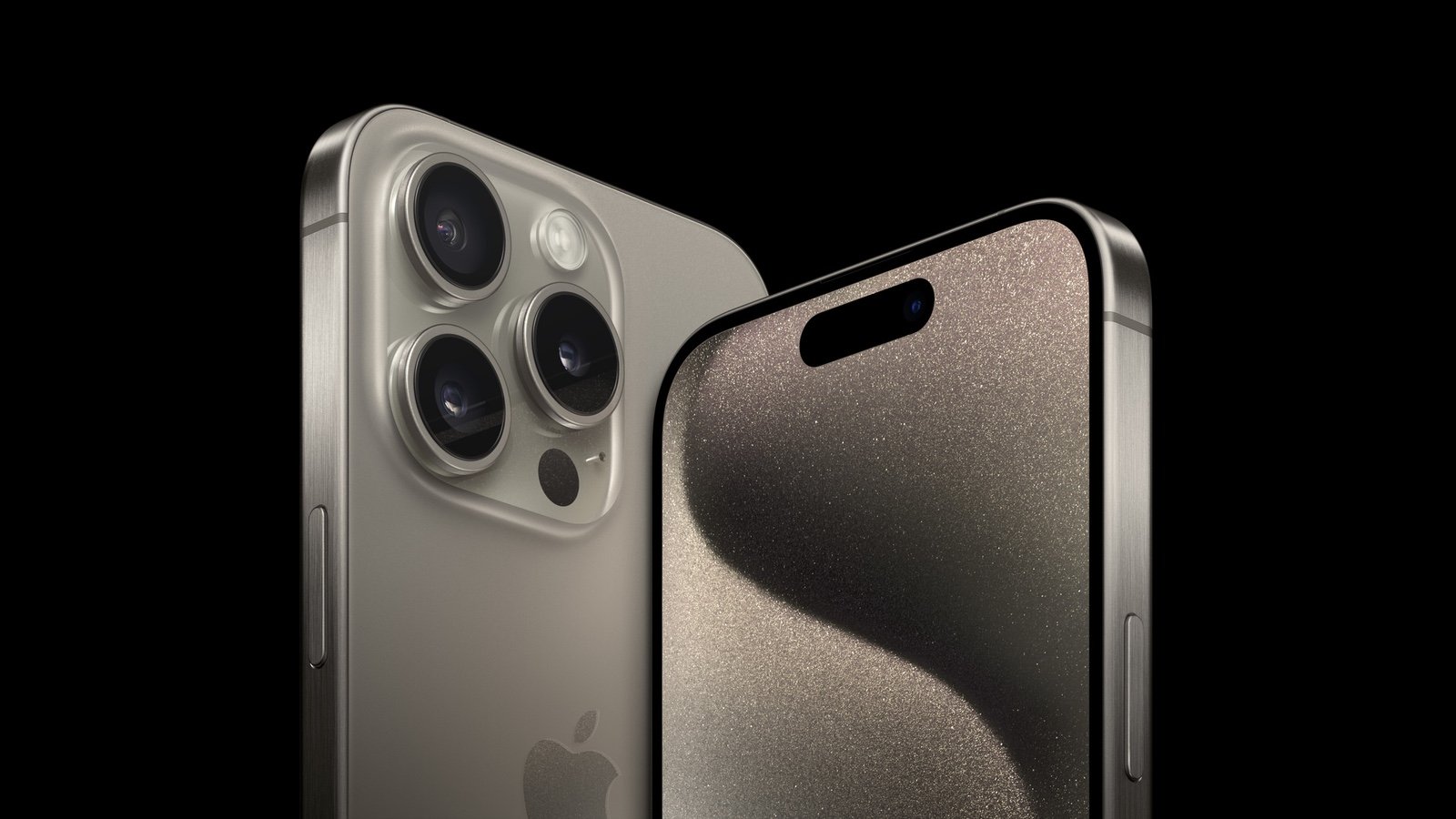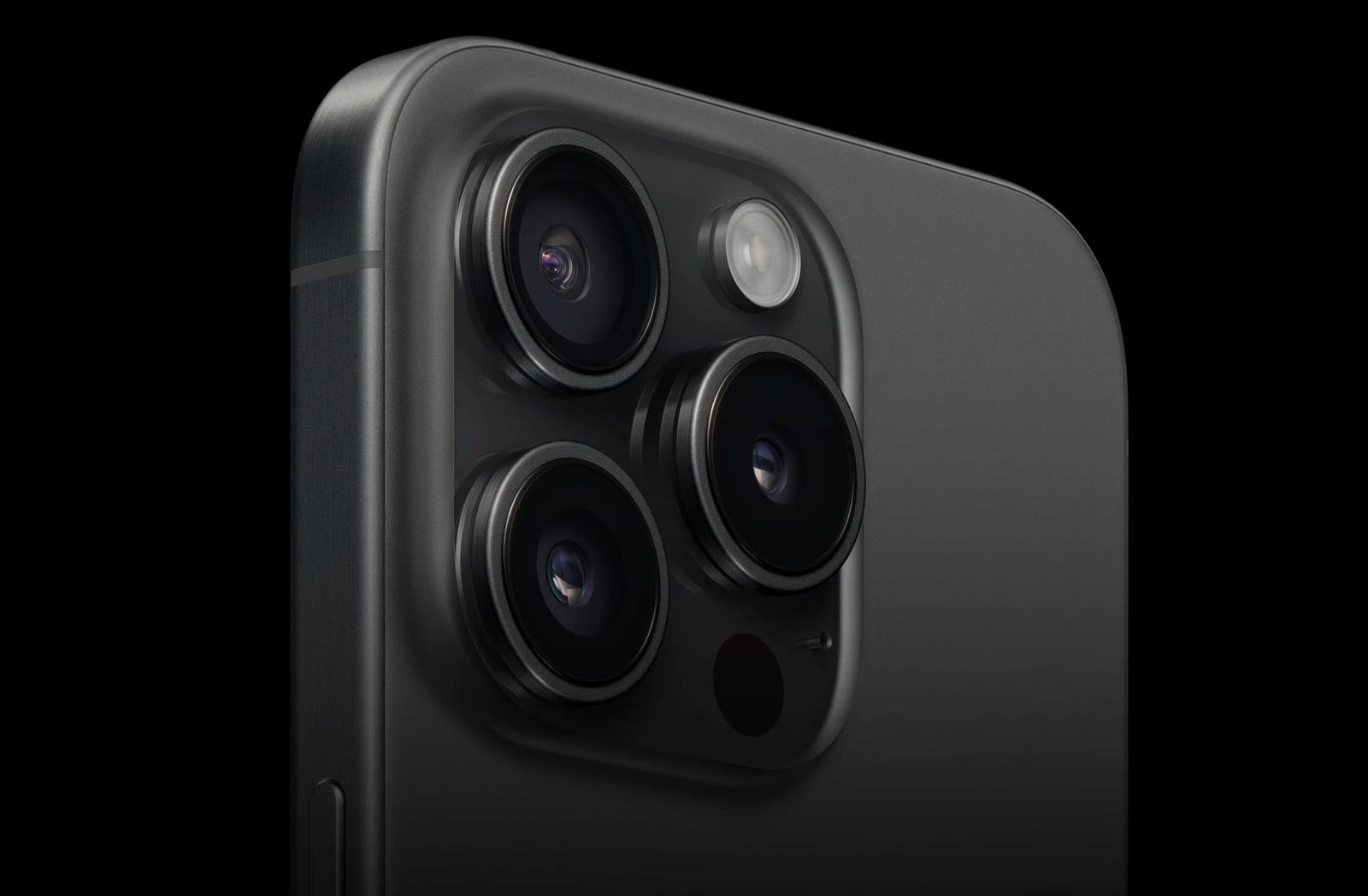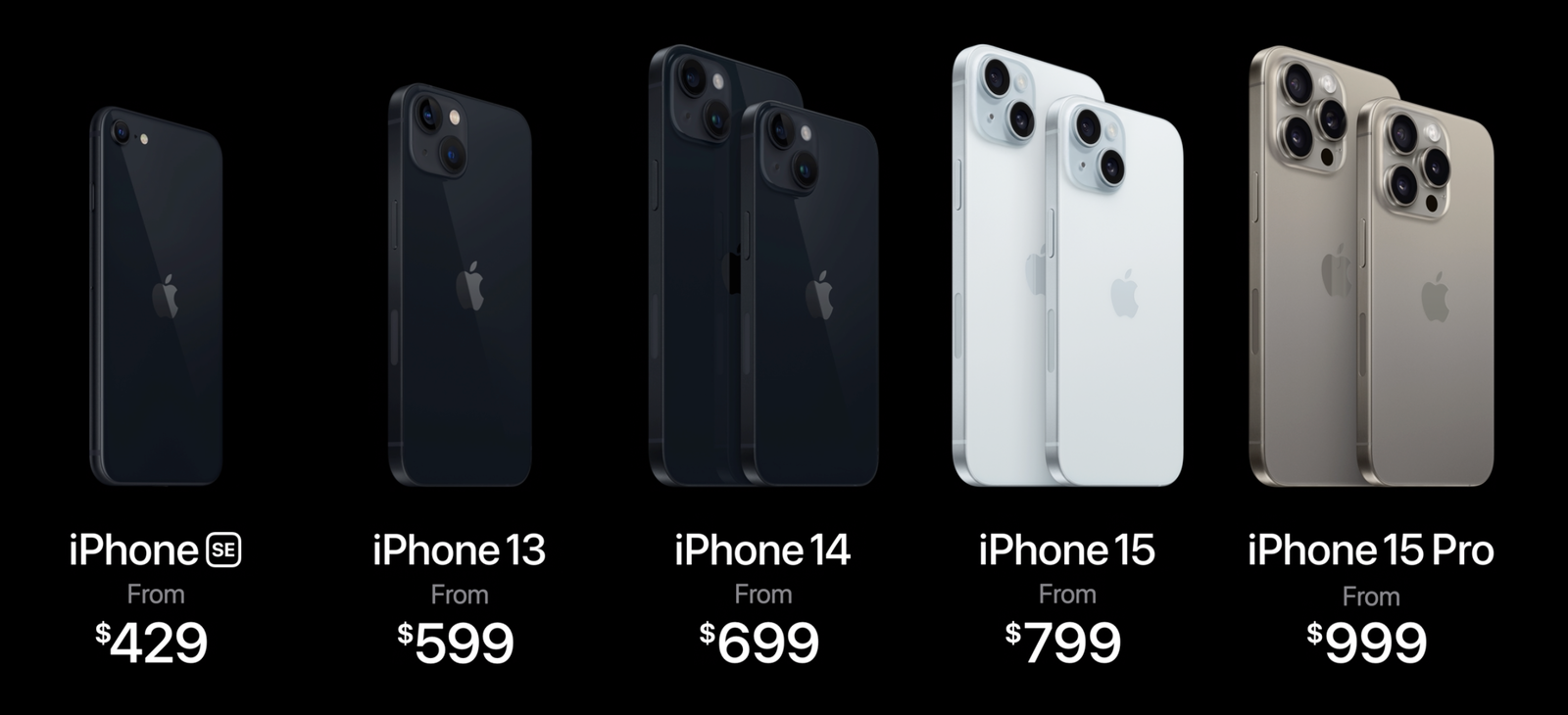How to Choose the Right iPhone for You in 2024
Posted on
by
Kirk McElhearn

While Apple releases a new iPhone in the fall every year, you may not want or need the latest features. Each year, Apple continues to sell several older models, at lower prices, and it can be confusing to choose an iPhone.
Rather than just pick an iPhone according to its price, it’s important to get the iPhone that is best suited to the way you use your phone. The criteria you use when choosing an iPhone are very different from those used to choose the ideal iPad, or the best Mac for your use case. This is because an iPhone is such a personal device: you generally carry it around and use it all day long. But an iPhone is more than just a phone: it’s a pocket computer, with an advanced camera system, and for many people, it’s the way they record memories.
Apple’s current line-up includes five different iPhone models, four of which come in different sizes, for a total of ten options (not counting choices of color and storage).
In this article, I’m going to look at the various use cases for the iPhone and help you decide which iPhone is right for you. Note that I only discuss models that Apple is currently selling; you can get other models used or refurbished from many sources.
You want the latest and greatest iPhone

Every year, Apple touts the newest iPhone as the best, fastest, and most wonderful iPhone ever. They’re not wrong; each year is an incremental improvement over the past, and for many people, new features may be essential.
This year’s models, the iPhone 15 and iPhone 15 Pro, offer improvements to the cameras, but not much else, compared to last year’s iPhone 14 line. The iPhone 15 Pro models offer an always-on display with ProMotion, a system that varies the refresh rate of the display, making it both better looking and less power-hungry. And the iPhone 15 Pro models also have an action button, located where the ring/silent switch has been for many years. You can use this button to silence your phone, but you can also program it to activate other features, such as the flashlight, the magnifier, to start recording with the Voice Memos app, and more. The iPhone 15 Pro models also have a titanium case, which is lighter and more scratch-resistant than stainless steel or aluminum.
As has been the case in recent years, all iPhone 15 models – Pro or not – include most of the same features, with the main difference being that the Pro models have a third camera. Last year, the iPhone 14 Pro increased the resolution of the main camera from 12 megapixels to 48 megapixels. This year, the 48-megapixel camera comes to the standard iPhone 15 as well. This offers an impressive level of detail, especially if you shoot in Raw or Apple’s ProRaw. (If you know what these are, then you’ll understand why this new sensor matters.)
Other marquee features available on all iPhone 15 models include the dynamic island, which uses the area around the front camera to display information.
Both versions of the iPhone 15 are available in two sizes: the 6.1″ iPhone 15 or iPhone 15 Pro, and the 6.7″ iPhone 15 Plus and iPhone 15 Pro Max.
All iPhone 15 models charge with a USB-C cable, not a lightning cable. This cable is included with the phone, but you may have several lightning cables in various locations that you’ll need to replace if you charge your phone at home, at work, and in your car. All iPhone 15 models also support MagSafe charging. For more on MagSafe chargers, see our Complete Guide to Apple MagSafe Chargers, Cases, and Accessories.
Note that you can buy an iPhone on Apple’s iPhone upgrade program, and, if you do, you can trade in your iPhone every year for a new one. If you always want the latest iPhone, this is your best bet. You can switch from year to year if you want, say, the plain model one year, the Pro the next year, and so on.
You want the iPhone with the best cameras

Apple generally includes the best cameras on its Pro model iPhones, but the plain iPhone 15 models have also seen a big upgrade this year. Last year’s iPhone 14 Pro models saw the addition of a 48-megapixel main camera, a huge upgrade over the 12-megapixel camera the iPhone has had for years. This year, the basic iPhone 15 also has a 48-megapixel main camera.
Pro models have three cameras, compared to only two on the plain iPhone 15: the additional camera is a telephoto lens, which is very useful, whereas the non-Pro models only have ultra-wide and wide-angle lenses. This is a 5x optical zoom, the longest zoom lens that Apple has ever had in an iPhone.

If you are familiar with cameras, this gives the iPhone 15 Pro and Pro Max a total of seven focal lengths, allowing you to shoot photos up close and at a distance.
If size matters

Left to right: iPhone 15 Pro Max, iPhone 15, iPhone SE (3rd generation).
This year’s models come in three sizes: the iPhone SE, the iPhone 15 and iPhone 15 Pro, and the iPhone 15 Plus and iPhone 15 Pro Max. These are respectively 4.7″, 6.1″, and 6.7″ displays. The Plus and Max models may be too large for some people. If you have small hands, then the Plus and Max iPhones will feel like a small iPad. If you have large hands, however, and large pockets – or always carry your iPhone in a purse or bag – and especially if you want the biggest display, then the iPhone 15 Plus or iPhone 15 Pro Max is for you.
Conversely, if you have small hands, and especially if you plan to carry your iPhone in a tight pocket often – and have good enough eyesight that you can read text on a smaller display – then it’s worth considering the iPhone SE (3rd generation), if there are no Pro features that you need. (Note that the iPhone SE has not been updated this year; it’s the same phone last updated in March 2022.)
If in doubt, try them out in a store. Phone size is very personal, and you may find that the size that works best for you is not the one you expected.
If price is most important
The cheapest iPhone that Apple currently sells is the iPhone SE (3rd generation). At $429, you get everything you need in an iPhone, without any frills. You don’t get Face ID (this is the only model with Touch ID), you don’t get the “edge-to-edge” display, and, at 4.7″, this display is pretty small. It has Apple’s A15 processor, so it is plenty fast, but the size of the display is a limiting factor. However, it’s a very light iPhone, and fits in even the tightest pockets.
Apple also still sells the iPhone 13, in just one size, 6.1″. This two-year-old model is a good compromise, at $599, with a dual-camera system, Face ID, and more.
For a bit more, you can buy last year’s iPhone 14, which adds crash detection, Emergency SOS via satellite, and a processor that is one generation newer.
As you can see, Apple has a full range of price points:

- $429: iPhone SE (3nd generation)
- $599: iPhone 13
- $699: iPhone 14
- $799: iPhone 14 Plus
- $799: iPhone 15
- $899: iPhone 15 Plus
- $999: iPhone 15 Pro
- $1199: iPhone 15 Pro Max
Naturally, these prices are for the base storage on the devices. The iPhone 15 Pro Max includes 256 GB, all other iPhone 15, iPhone 14, and iPhone 13 models start at 128 GB, while the iPhone SE only offers 64 GB storage. Adding more storage increases the cost of the device.
Choosing an iPhone can be a complicated calculation, because Apple has arranged the pricing so you can get a bit more features for a bit more money; it’s very tempting to think that you might want to move up one notch in the price hierarchy.
You should also think long term. The oldest model that Apple currently sells, the iPhone 13, was released in 2021. If you plan to use your new phone for several years before buying another one, bear in mind that Apple will eventually stop releasing iOS updates for that model. The older an iPhone model is at the time you buy it, the fewer years you’ll be able to get iOS updates—and security updates—for it. (See our article When does an old iPhone become unsafe to use? for more details.)
It can also be useful to look at pricing differently. If you’ve decided which size iPhone you want, you can then compare the prices of the different models in that size category:
Small iPhone:
- $429: iPhone SE (3nd generation)
Larger iPhones:
- $599: iPhone 13
- $699: iPhone 14
- $799: iPhone 15
- $999: iPhone 15 Pro
Largest iPhones:
- $799: iPhone 14 Plus
- $899: iPhone 15 Plus
- $1199: iPhone 15 Pro Max
You can trade in your old iPhone to get credit from Apple, but it’s worth shopping around; there are plenty of companies that buy used devices, and they generally offer more than Apple does. (We list several of these companies here.) Also, Apple sometimes offers financing deals such as 0% interest for 12 or 24 months, so if price is an issue, look for these. And carriers in different countries may also offer deals, including increased trade-in value, but this usually requires that you commit to a carrier for a fixed amount of time.
If you need lots of storage
The latest iPhone models start at 128 GB, though the iPhone 15 Pro Max starts at 256 GB, and you can configure the iPhone 15 Pros up to 1 TB. This comes at a cost, of course. But if you need this much storage, then you know you need to pay for it. The only likely reason you’d need 1 TB storage is if you shoot a lot of videos, notably with ProRes, available on the iPhone 14 and 15 Pro models. This video format uses so much space – 6 GB per minute for 4K, and 1.7 GB per minute for 1080p – that Apple won’t even let you shoot ProRes in 4K unless your iPhone has at least 256 GB storage.
However, the iPhone 15 Pro models allow you to record video directly to external storage. Since all iPhone 15 models have USB-C, and the Pro models support USB 3.0 at speeds up to 10 Mbps, you can plug an external storage device, such as a portable SSD, into an iPhone Pro model to shoot video. In that case, you may not need to pay for the extra internal storage.
Even if you don’t shoot ProRes, if you do shoot a lot of videos, and your current iPhone is running out of space, consider getting more storage. If you’re upgrading from a 64 GB iPhone to an iPhone 15, which has at least 128 GB, you may not have any problems, but look at how much you’re using on your current iPhone, then consider that in a year or two you may be using much more.
If you need the longest battery life
If you’re out and about all day, you may want the iPhone model that has the best battery life. In general, that’s the latest model, and the iPhone 15 Pro Max tops the chart with up to 29 hours of video playback, 25 hours of streamed video playback, and up to 95 hours of audio playback. You’d be hard-pressed to keep an iPhone alive for 95 hours, unless you turned off things like Wi-Fi and Bluetooth, and dimmed the screen—but these numbers are indicative of how long an iPhone’s battery would last doing just that one dedicated task, based on Apple’s testing.
The iPhone 15 Pro is rated for 23 hours, 20 hours, and 75 hours respectively. Go down a notch to the plain iPhone 15, and these numbers drop to 20 hours, 16 hours, and 80 hours. It’s worth noting that these battery life figures have been consistent for the past few years. Apple made big improvements to battery life with the iPhone 13 models, but it hasn’t changed much since then.
Battery life is something you can mitigate with a battery pack, either Apple’s MagSafe Battery Pack, or third-party MagSafe battery packs, or even power banks that you connect to the phone’s charging port with a USB cable. That said, it’s really helpful to know that you can make it through the day with your iPhone without needing to stop to charge it.
How to make up your mind
Most people don’t upgrade their iPhones every year. If you do, consider joining Apple’s iPhone upgrade program; it means that you’ll get a new phone each year, and can trade in the old one. You also get AppleCare+ with that program, ensuring that repairs to your iPhone don’t cost a lot.
If you only upgrade every two or three years (or even less often), or if you tend to hand down your old iPhone to someone else whenever you upgrade, then your buying decision now could affect the future much more. But for most people, it isn’t worth spending a lot of time worriedly comparing every little product specification. All the iPhones that Apple sells are good enough for just about everyone.
How can I learn more?
 Each week on the Intego Mac Podcast, Intego’s Mac security experts discuss the latest Apple news, security and privacy stories, and offer practical advice on getting the most out of your Apple devices. Be sure to follow the podcast to make sure you don’t miss any episodes.
Each week on the Intego Mac Podcast, Intego’s Mac security experts discuss the latest Apple news, security and privacy stories, and offer practical advice on getting the most out of your Apple devices. Be sure to follow the podcast to make sure you don’t miss any episodes.
You can also subscribe to our e-mail newsletter and keep an eye here on The Mac Security Blog for the latest Apple security and privacy news. And don’t forget to follow Intego on your favorite social media channels: ![]()
![]()
![]()
![]()
![]()
![]()
![]()